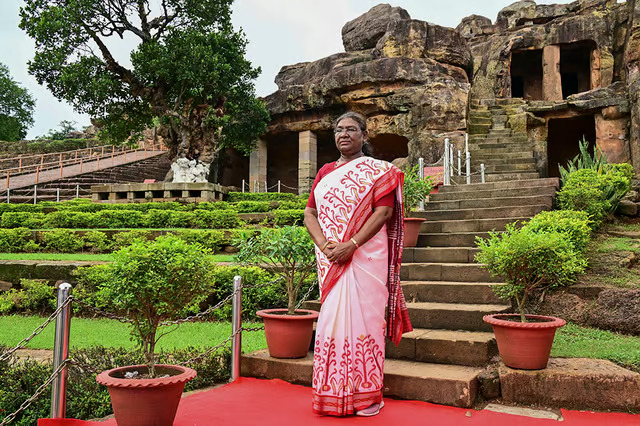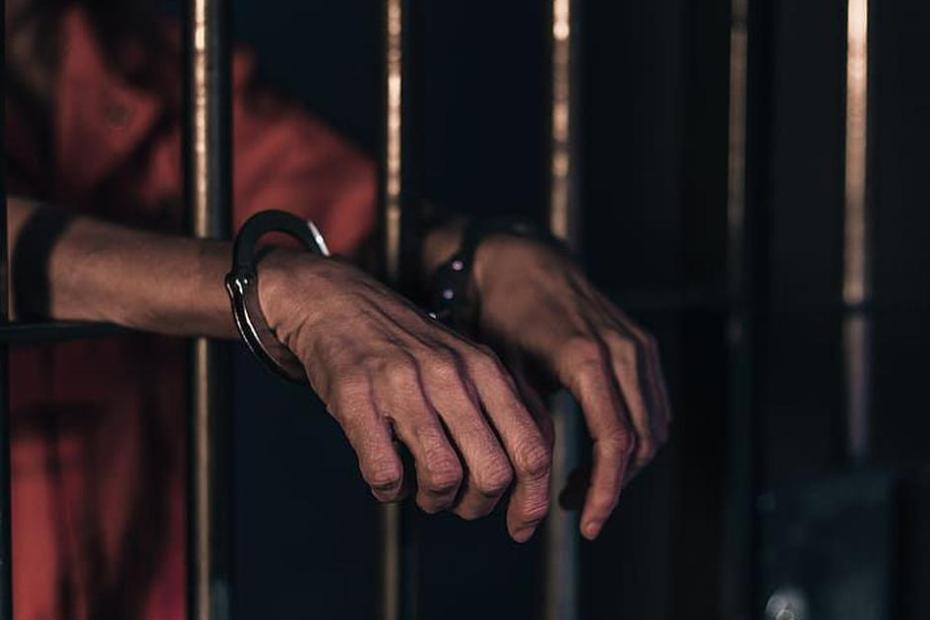- Courses
- GS Full Course 1 Year
- GS Full Course 2 Year
- GS Full Course 3 Year
- GS Full Course Till Selection
- Answer Alpha: Mains 2025 Mentorship
- MEP (Mains Enrichment Programme) Data, Facts
- Essay Target – 150+ Marks
- Online Program
- GS Recorded Course
- Polity
- Geography
- Economy
- Ancient, Medieval and Art & Culture AMAC
- Modern India, Post Independence & World History
- Environment
- Governance
- Science & Technology
- International Relations and Internal Security
- Disaster Management
- Ethics
- NCERT Current Affairs
- Indian Society and Social Issue
- NCERT- Science and Technology
- NCERT - Geography
- NCERT - Ancient History
- NCERT- World History
- NCERT Modern History
- CSAT
- 5 LAYERED ARJUNA Mentorship
- Public Administration Optional
- ABOUT US
- OUR TOPPERS
- TEST SERIES
- FREE STUDY MATERIAL
- VIDEOS
- CONTACT US
President Murmu Visits Khandagiri & Udayagiri Caves
President Murmu Visits Khandagiri & Udayagiri Caves
27-08-2024

In July 2024, The President of India, Droupadi Murmu visited Udayagiri caves, situated in Bhubaneswar, Odisha.
About Udayagiri and Khandagiri Caves:
- The caves are situated on two adjacent hills, Udayagiri and Khandagiri mentioned as Kumari Parvata in the Hathigumpha inscription.
- They have a number of finely carved caves built during the 1st century BCE.
- Most of these caves were carved out as residential blocks for Jain ascetics during the reign of King Kharavela.
- Kharavela was a monarch of Kalinga in present-day Odisha, who ruled during the second or first century BCE.
- The kingdom of Kalinga was invaded by Ashoka in 262-261 BCE.
- The Hathigumpha inscription implies that Kalinga regained its independence from the Maurya Empire sometime after Ashoka's death.
- Kharavela was born in an independent Kalinga.
- The rock cutting activities continued till the time of the Somavamsis of tenth-eleventh century A.D.
- Most of the caves consist of a row of cells with portions opening into the courtyard. The doorway of cells has pilasters on either side with crowning animal figures and arches, decorated with flowers, creepers and animal motifs.
- Udayagiri means 18 caves while Khandagiri has 15 caves.
- The caves of Udayagiri and Khandagiri are called called lena or leṇa in the inscriptions.
- The most important was Ranigumpha in Udayagiri which is a double storeyed monastery.
- Other important caves include Hathi Gumpha, Ananta Gumpha, Ganesha Gumpha, Jaya Vijaya Gumpha, Mancapuri Gumpha, Bagha/ Vyaghra Gumpha and Sarpa Gumpha.
- The Caves are also listed as one of the Adarsh Smarak Monument by Archaeological Survey of India.
- Under the Adarsh Smarak initiative, the selected places are provided with additional facilities like wi-fi, cafeteria, interpretation centre, Braille signages and illumination among other things.
- The scheme was launched in 2014 for providing improved visitor amenities, especially for the physically challenged.
Some important Caves at Udayagiri:
Rani Gumpha ‘Cave of the Queen’:
- Rani Gumpha is the largest and most popular cave among the caves of Udayagiri and Khandagiri.
- This cave is double storeyed.
- The upper portion of the central wing has relief images depicting the victory march of a king.
- Many of the cells have carved Dwara Pala images.
Mancapuri and Swargapuri Gumpha:
- Mancapuri and Swargapuri Gumpha are double storeyed.
- Manchapuri cave depicts two male and two female figures worshipping the Kalinga Jina that Kharavela brought back from Magadha.
- Kalinga Jina had been taken away from Kalinga by Mahapadmananda and its restoration was considered to be a great achievement of Kharavela.
- There are three inscriptions: one inscription talks about the chief queen of Kharavela, and the other two refer to Kudepasiri, the successor of Kharavela and Badukha, the son or brother of Kudepasiri.
Ganesha Gumpha:
- The cave is named for the carved figure of Ganesha on the back of its right cell. It would have been carved in the later period.
- The carved figures of Dwara Palas are found at the entrances.
Hathigumpha:
- It is a large natural cave with an inscription carved out in Brahmi Script by King Kharavela which is the main source of information about him.
- The cave is known as Hathi Gumpha due to its exquisite carvings of elephants.



